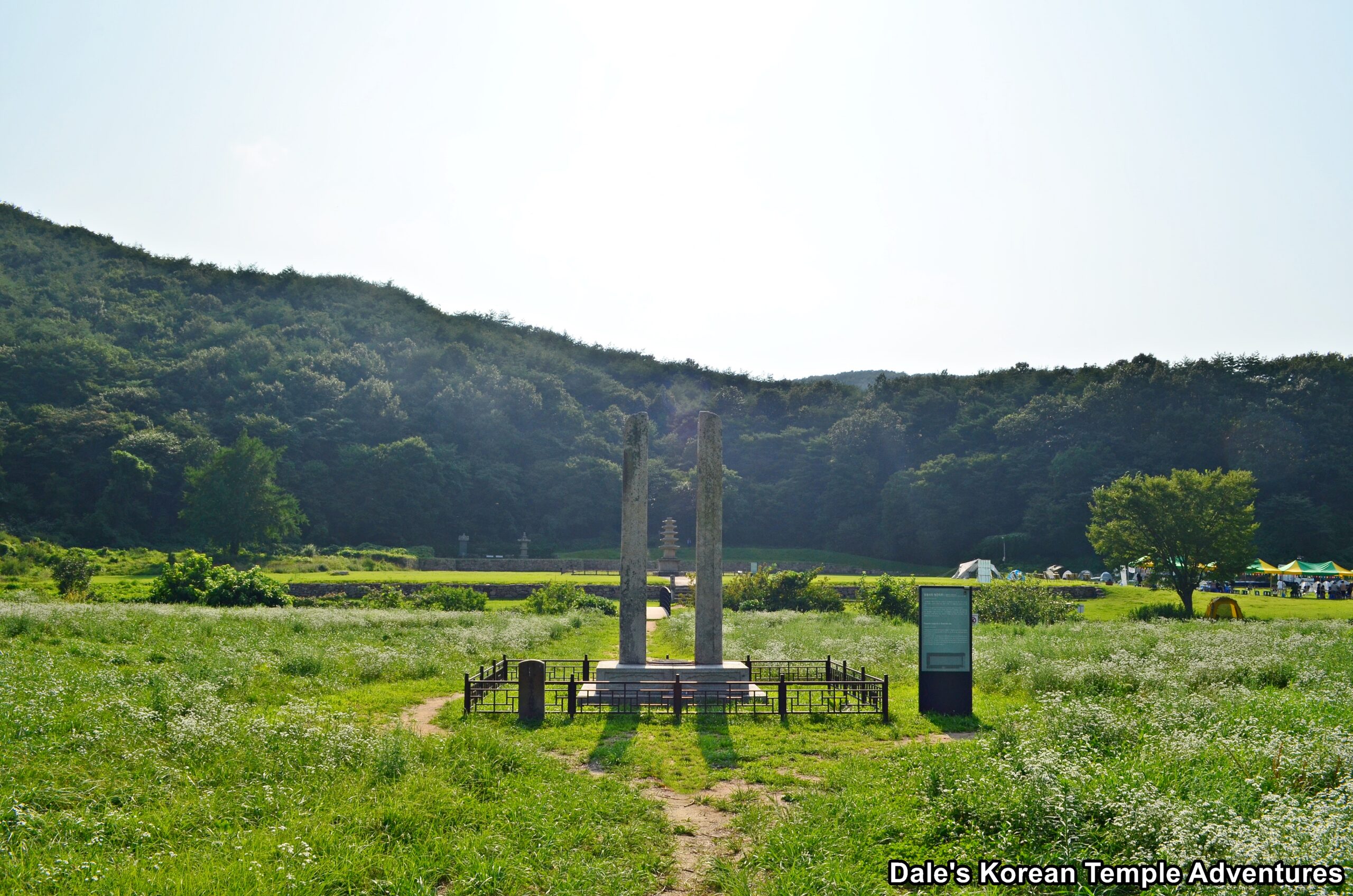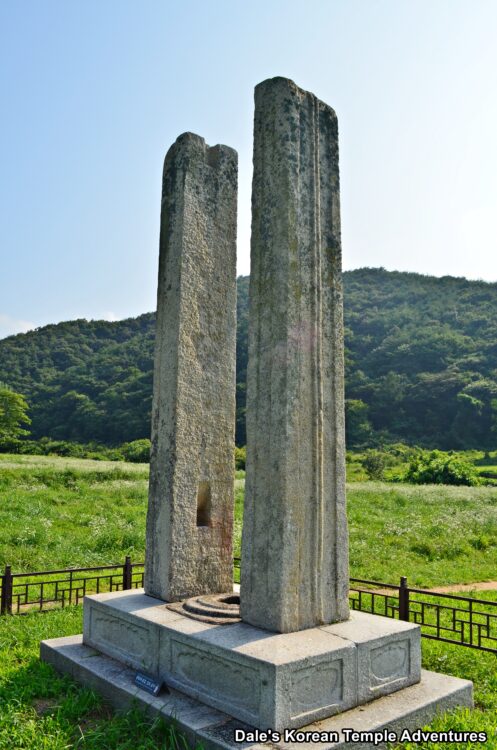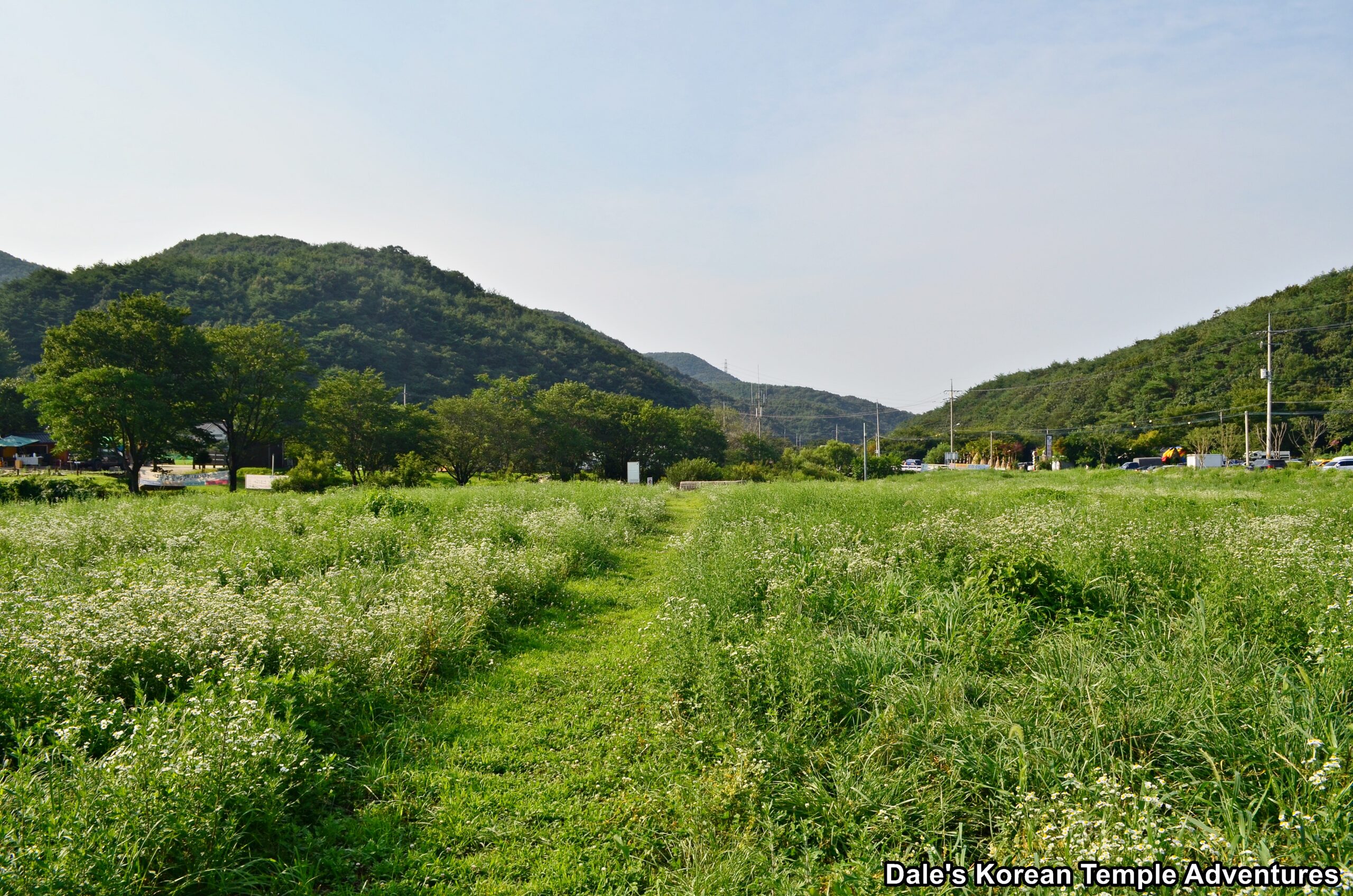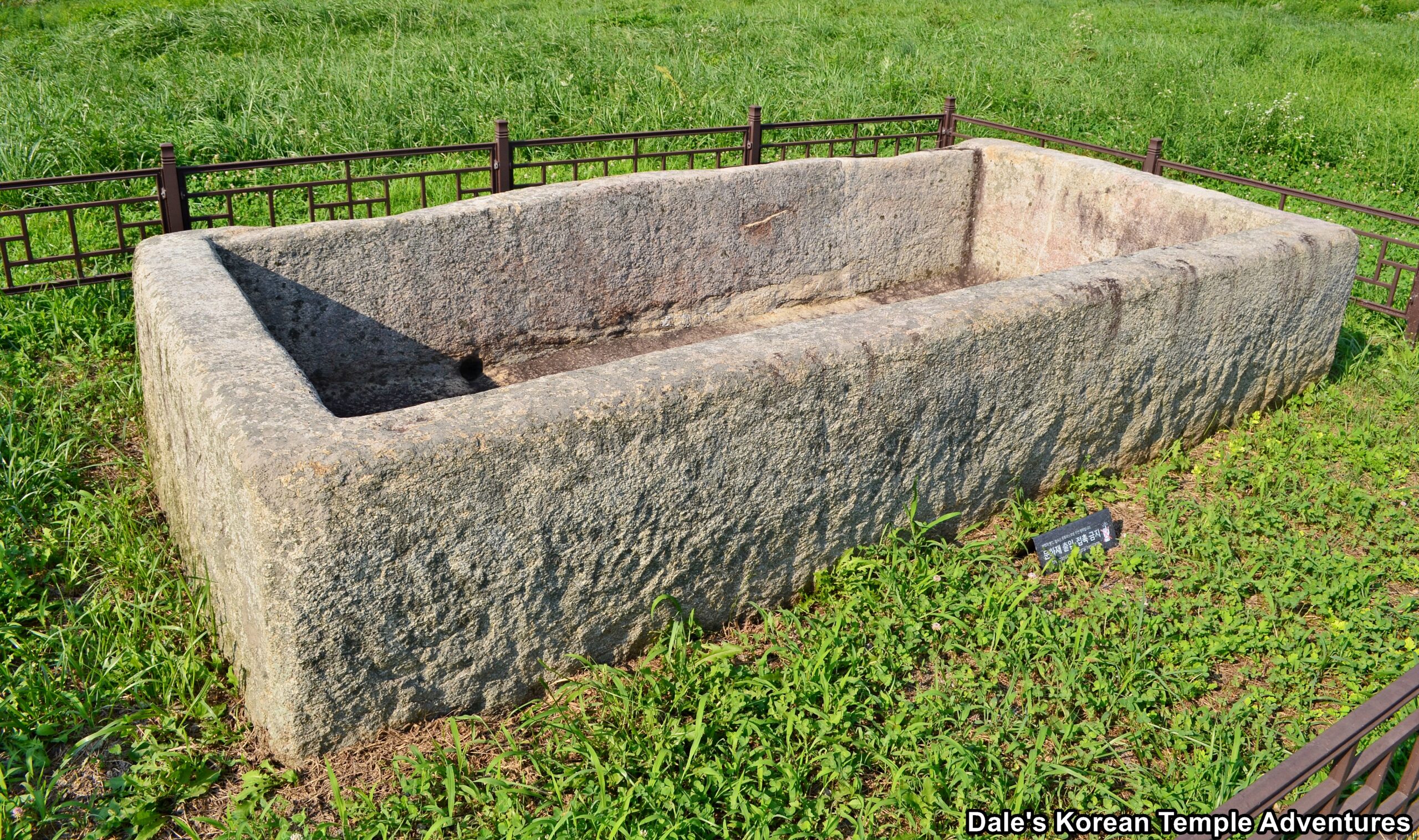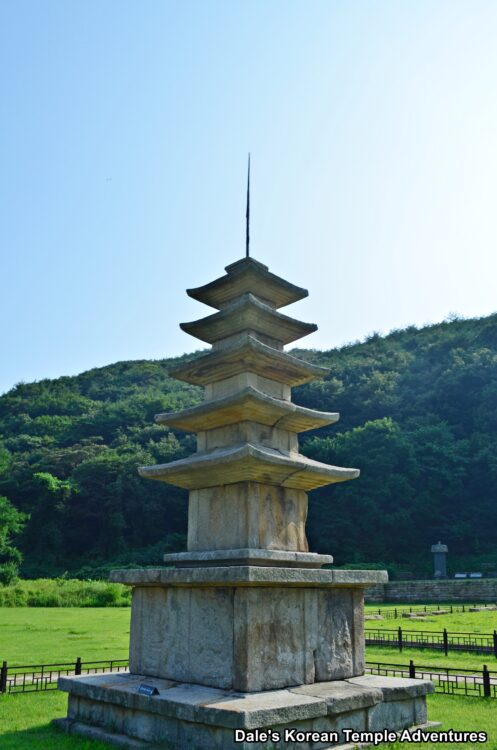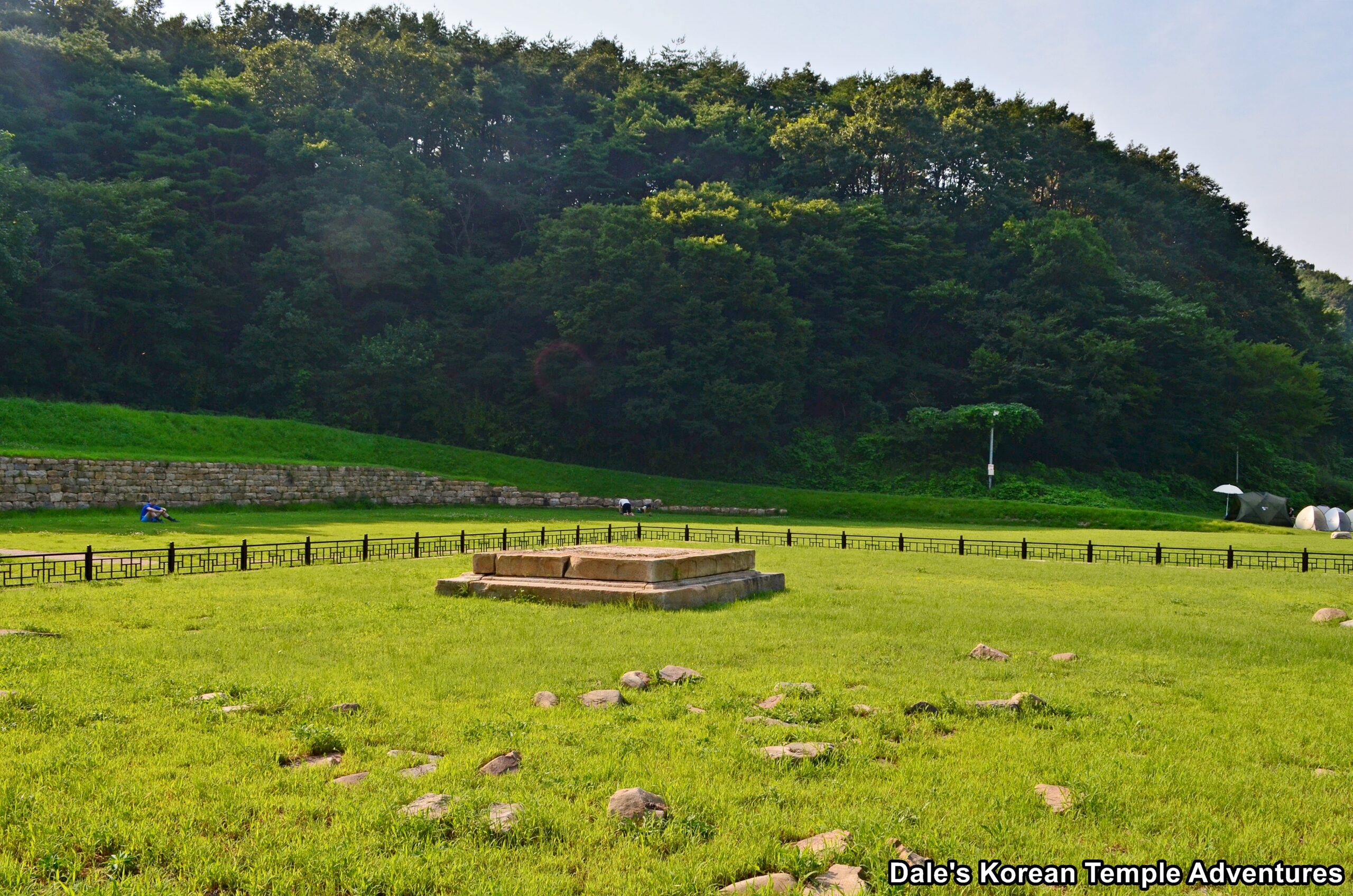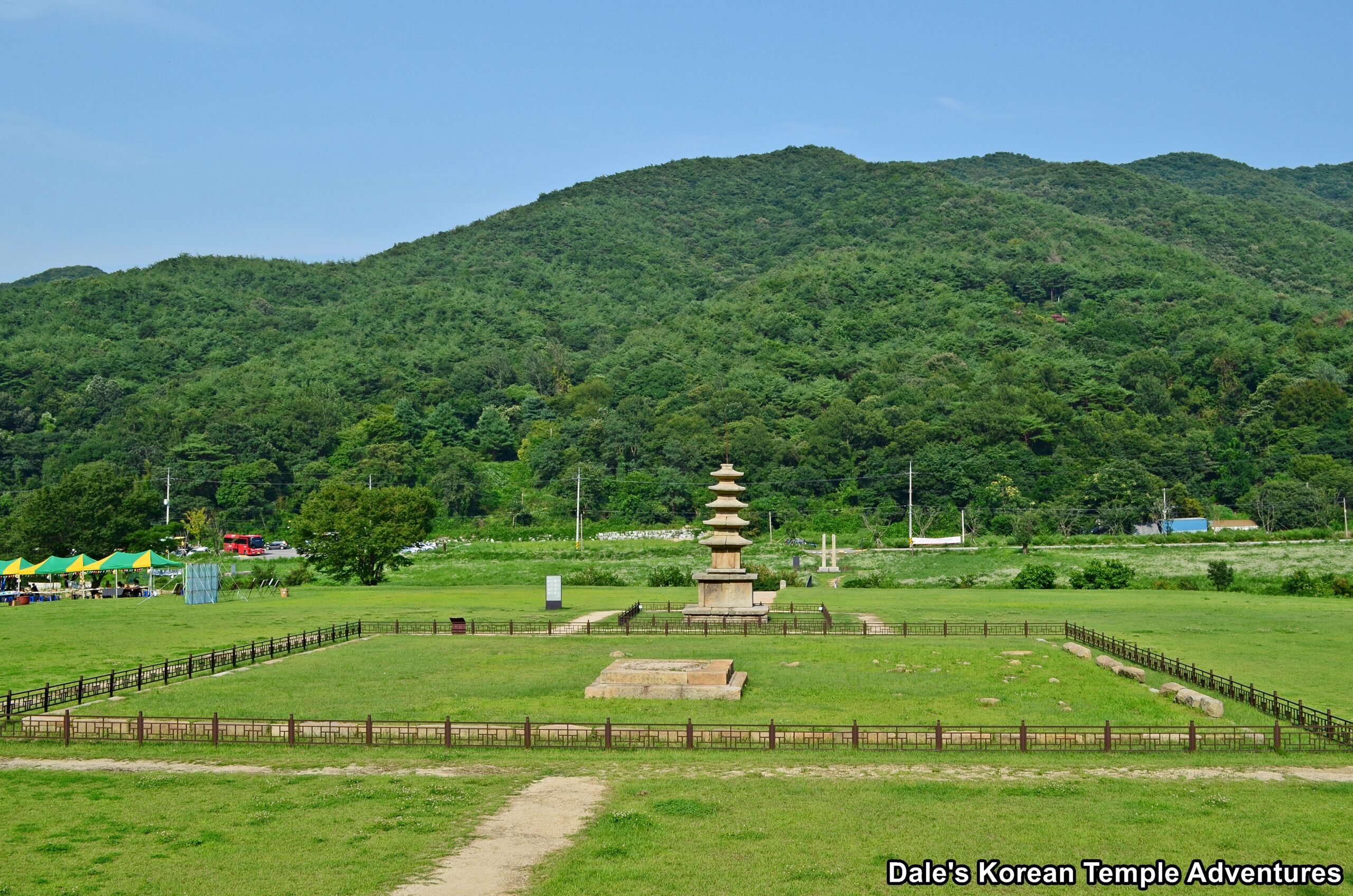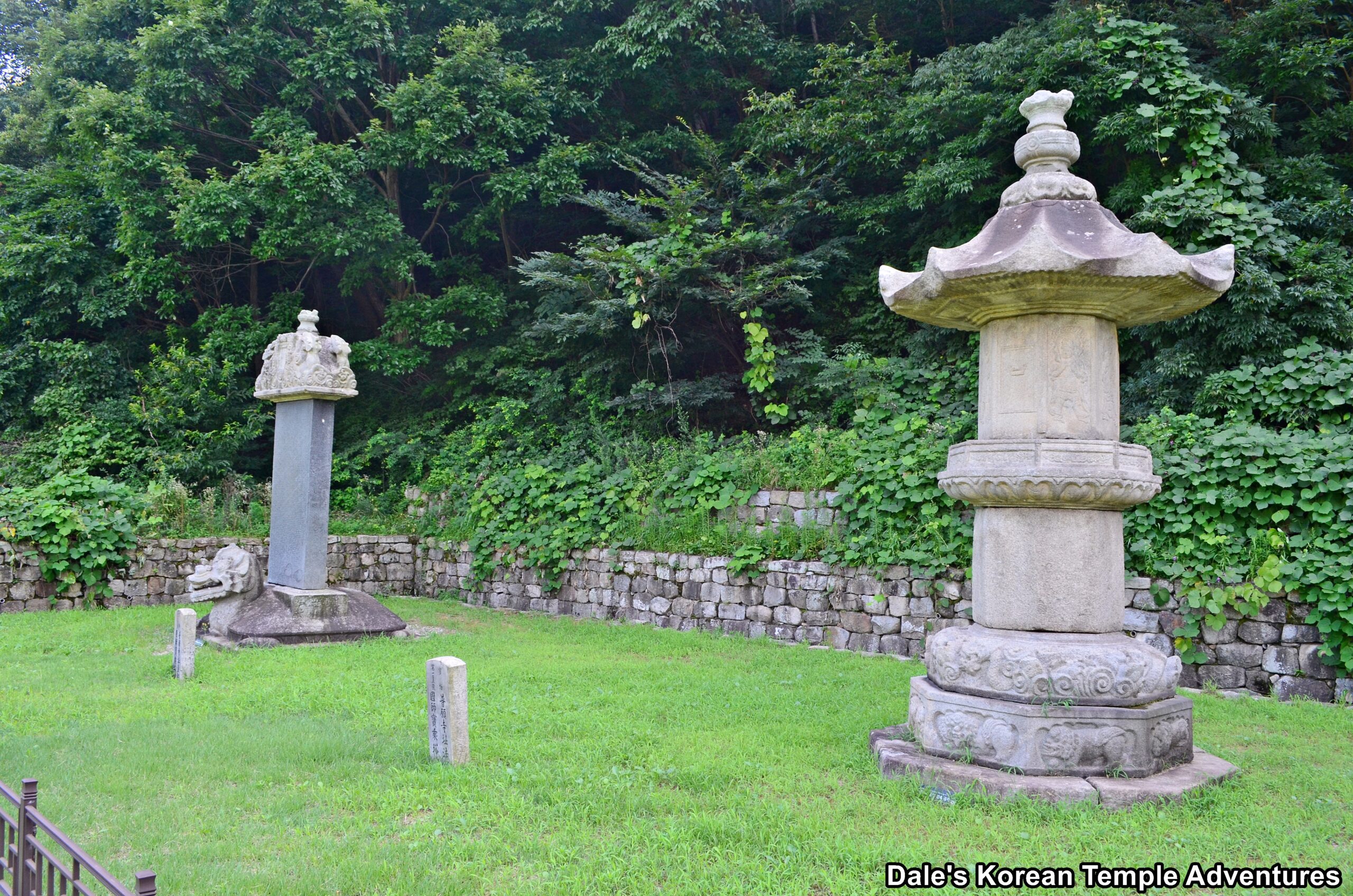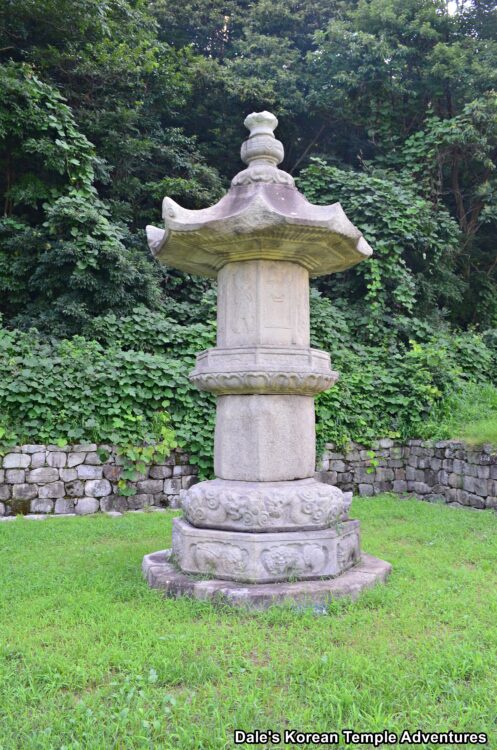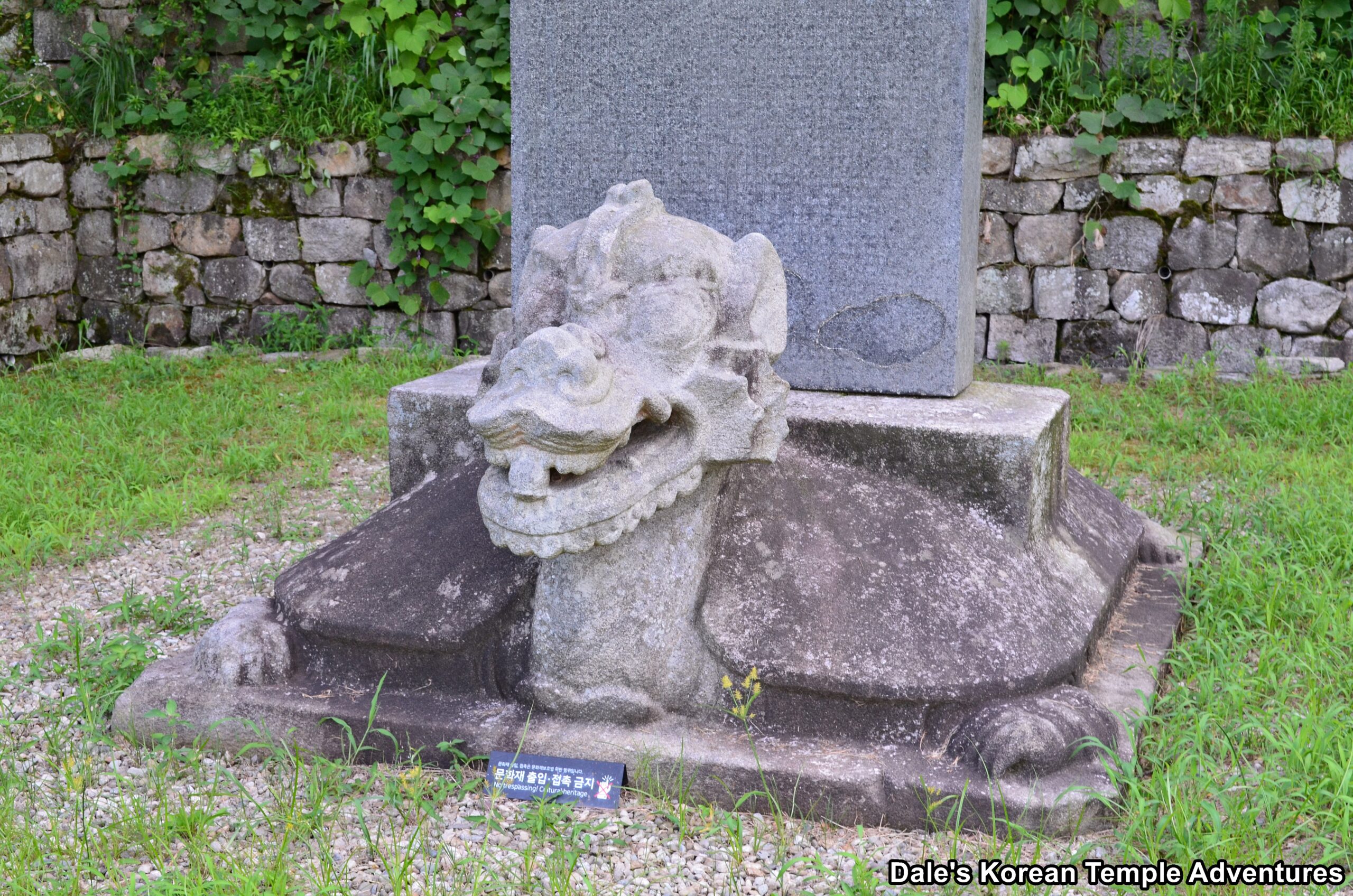Bowonsa-ji Temple Site – 보원사지 (Seosan, Chungcheongnam-do)
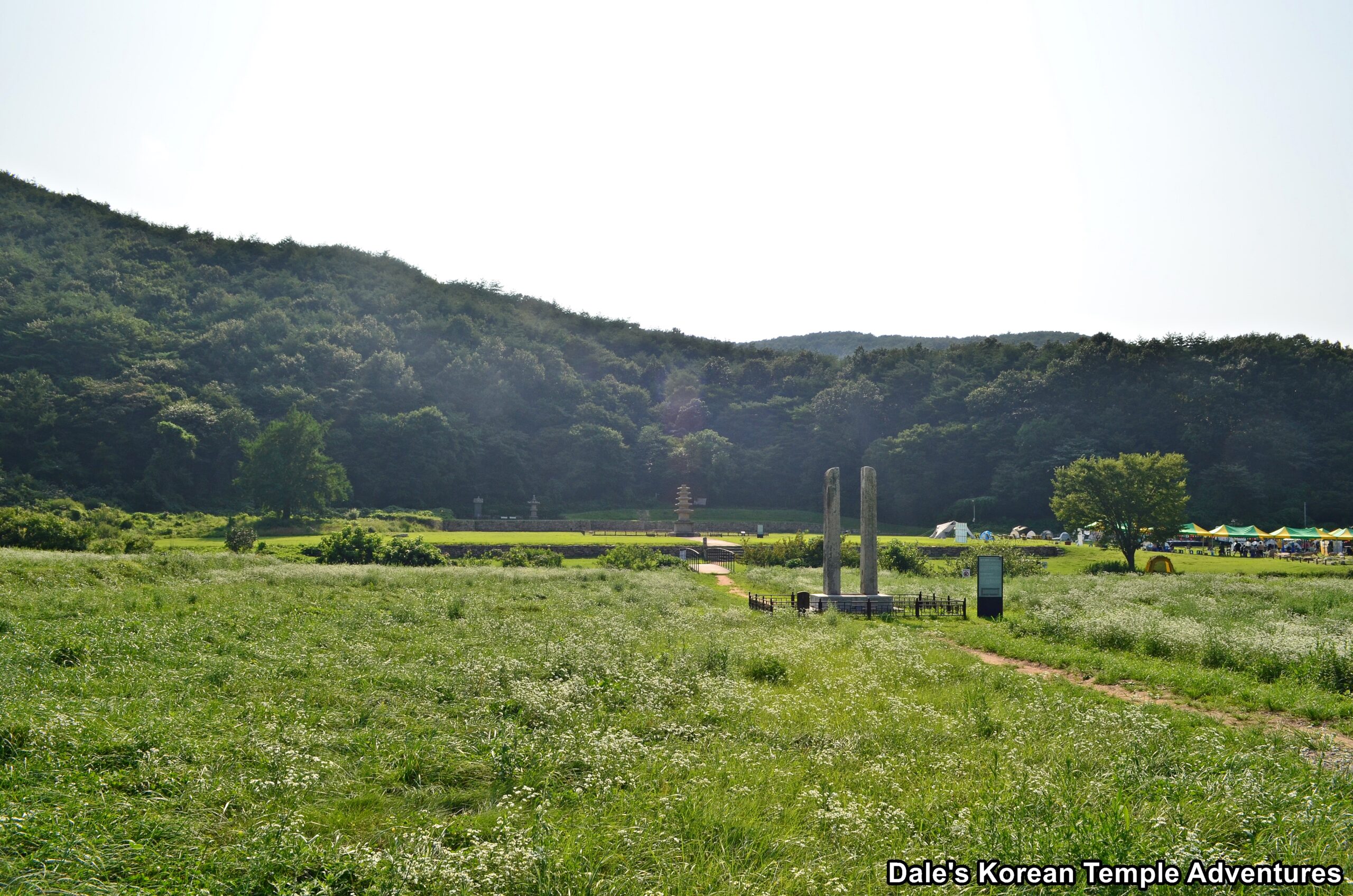
Temple Site History
The Bowonsa-ji Temple Site is located in Seosan, Chungcheongnam-do in the village of Bowon to the south of Mt. Sangwangsan (309.5 m). The exact date as to when the temple was first built is unknown. However, it’s presumed to have first been built either at the end of Unified Silla (668-935 A.D.) or the early Goryeo Dynasty (918-1392). Rather interestingly, the Gilt-Bronze Standing Buddha from the Baekje Kingdom (18 B.C. – 660 A.D.) was discovered in 1968 at the temple site, and it’s now housed at the National Museum of Korea, which suggests that Bonwonsa Temple was first established during the Baekje Kingdom and not later.
Rather interestingly, the earliest known record describing Bowonsa Temple is the Stele for Master Bojo at Borimsa Temple, when it states on the stele “In 827 A.D., I was taught by Priest Hwasan Gwonbeopsa and was ordained at Bowonsa Temple in Mt. Gayahyeopsan.” This suggests that Bowonsa Temple already existed some time in the early 9th century.
According to some records, Bowonsa Temple was at its largest during the Goryeo Dynasty (918-1392). In fact, a Buddhist doctrine test was administered in the second year of King Jeongjong of Goryeo reign in 1036. This suggests just how powerful Bowonsa Temple had become at this time. And Bowonsa Temple remained active as a temple until the Joseon Dynasty (1392-1910). Eventually, the temple would fall into disrepair; and now, there are private houses built nearby the temple site. However, the exact dates as to when Bowonsa Temple was first established and then closed remain unknown. However, through numerous archaeological excavations, the size and scope of Bowonsa Temple is better known.
In total, and in accordance with both Chungcheongnam-do and the city of Seosan, the Buyeo National Institute of Cultural Heritage first conducted a comprehensive survey of the temple site in 2006. In total, seven excavations were done on the Bowonsa-ji Temple Site until 2012. Specifically, the first excavation took place in 2006, the second in 2007, the third in 2008, the fourth in 2009, the fifth in 2010, the sixth in 2011, and the seventh (and final) in 2012.
During this exhaustive excavation work numerous things were discovered about the temple site. First, the western section of the temple site, which includes the Five-Story Stone Pagoda at Bowonsa Temple Site, was the main site for the temple buildings that dated back to the mid-to-late Goryeo Dynasty to the early Joseon Dynasty. Additionally, the central buildings that were the oldest at Bowonsa Temple and date back to late Goryeo or early Joseon, were surrounded by roofed corridors. This is based upon the existence of western and southern roofed corridor sites currently at the Bowonsa-ji Temple Site.
The southern section, on the other hand, has a stone embankment that formed a boundary of the temple. A cluster of buildings existed on a two-tiered sectional that divided the grounds. And each of the buildings on each of the tiers had different centers. The buildings on the southern section appear to have been arranged differently then those in the centre. This indicates that there was more than one courtyard at Bowonsa Temple.
In total, numerous artifacts were discovered at the temple site during these excavations including celadon from the 9th or 10th centuries. Having been discovered in the eastern section of the Bowonsa-ji Temple Site, it indicates the possibility that the temple buildings were first built either at the time of the temple’s founding or were refurbished during the Goryeo Dynasty. These relics also included numerous from the slopes in the eastern section, which highlights the fact of just how large the temple must have once been.
The Bowonsa-ji Temple Site is home to five Korean Treasures which help give a fuller picture of the temple’s past. One of these clues is the Stele for State Preceptor Beopin at Bowonsa Temple Site, which details how 1,000 monks had once stayed at the temple, which helps modern researchers understand that Bowonsa Temple must have been quite a large temple.
The other cultural heritage items at the Bowonsa-ji Temple Site is the Stone Basin at Bowonsa Temple Site, which is Korean Treasure #102; the Flagpole Supports at Bowonsa Temple Site, which is Korean Treasure #103; the Five-Story Stone Pagoda at Bowonsa Temple Site, which is Korean Treasure #104; and the Stupa of State Preceptor Beopin at Bowonsa Temple Site, which is Korean Treasure #105. Additionally, the Bowonsa-ji Temple Site is Historic Site #316. Additionally, the Rock-Carved Buddha Triad in Yonghyeon-ri, which is a National Treasure, is very close by, as well.
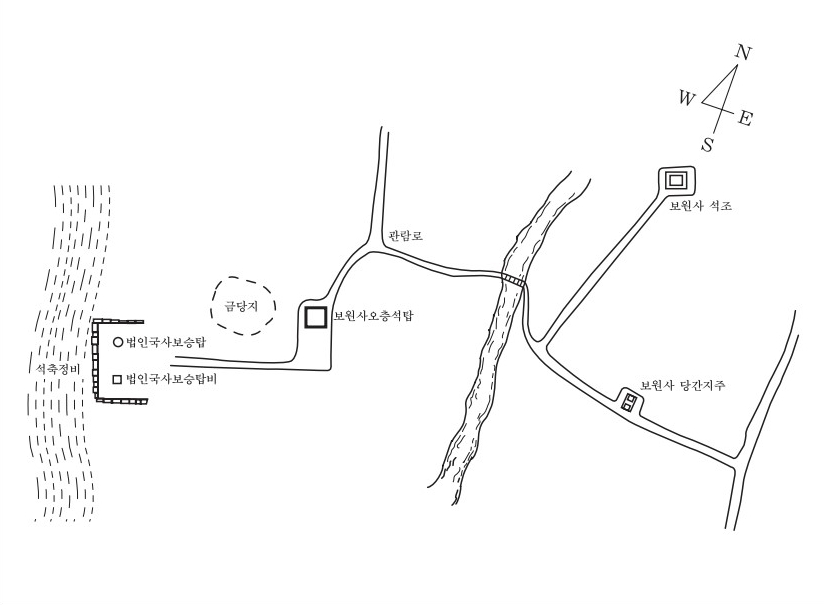
Temple Site Layout
You’ll first approach the Bowonsa-ji Temple Site from the east. And the first of the five Korean Treasures that you’ll approach is the Flagpole Supports at Bowonsa Temple Site. These flagpole supports are known as “danggan” in Korean. Typically, flags were placed on these flagpoles at the entrance of a temple to mark a special occasion like Buddhist ceremonies. The two supports that comprise flagpole supports at the Bowonsa-ji Temple Site are separated by 70 cm. There’s no decoration adorning these two stone pillars; instead, the outward facing stones of the supports are engraved with wide stripes. The flagpole supports are rounded at the top and narrow the further up the structure they go. There are square holes in both the upper and lower portion of the supports. These square holes were used to fix flagpoles to. Based upon the style and style of carvings on the flagpole supports, it’s believed that the Flagpole Supports at Bowonsa Temple Site were first made during Unified Silla (668-935 A.D.). Further supporting this claim are several artifacts found in the vicinity of the flagpole supports that date back to the final years of Unified Silla and the early Goryeo Dynasty (918-1392).
Parallel, and to the north of the Flagpole Supports at Bowonsa Temple Site, is the second Korean Treasure at the temple site: the Stone Basin at Bowonsa Temple Site. The stone basin is rectangular in shape. This basin was used by Buddhist monks to store water. The basin is made of a single block of granite, and it exhibits the same plain style used during Unfied Silla. Rather interestingly, it’s unclear if this basin was partially buried in the ground, as only the upper portion and inner part of the basin are properly trimmed, while the outer surface of the basin is roughly completed. Also adding to the belief that Bowonsa Temple was quite large in size when it was at its peak is the sheer size of the basin and its ability to contain four tons of water.
Crossing a bridge that spans a stream, you’ll come to the central part of the temple site. In this central location, you’ll find the Five-Story Stone Pagoda at Bowonsa Temple Site, which is the third Korean Treasure at the temple site. This stone pagoda is believed to have first been built during the Goryeo Dynasty. And it stood in front of the main hall, which is now the Geumdang-ji Site. The five-story pagoda was erected on a double-layered base. Two faces of the base are adorned with lions, while the two upper layer faces are adorned with two of the eight guardian deities. The eight guardian deities were commonly engraved on pagodas at this time to help protect the laws of the Buddha. The first body stone is decorated with door designs, while each roof stone is thin and widely built. The wide roof stones are based upon the style of stone pagodas from the Baekje Kingdom. And all that remains of the finial is an iron rod which helped secure the ornaments that once stood atop the stone pagoda. Rather interestingly, it’s believed that the Five-Story Stone Pagoda at Bowonsa Temple Site stood in its original state from the Goryeo Dynasty up until 1945 with the liberation of Korea from Japan. Discovered in 1986 during repair work conducted on the pagoda, a sari bottle was found and is now housed at the Buyeo National Museum.
To the west of the Five-Story Stone Pagoda at Bowonsa Temple Site is the Geumdang-ji Site. This was the former main hall at the temple. Now only the rough outline of the main hall remains intact with a slightly elevated stone foundation and border. In the centre of this squarish main hall is a two-tier stone platform that must have once been the main altar inside the Geumdang Hall. Like most Goryeo-era main halls, the stone platform isn’t right up against the back wall of the former structure. Instead, there is enough space for worshippers and monks to circumambulate the interior of the main hall. The stone platform is similar to the one found in eastern Gyeongju at the Janghang-ri Temple Site.
And to the west of the central structures of the five-story pagoda and the Geumdang-ji Site, and up the embankment, is the home of the Stupa of State Preceptor Beopin at Bowonsa Temple Site and the Stele for State Preceptor Beopin at Bowonsa Temple Site. The first of the two, and standing to the right, is the stupa. Typically, a stupa consists of a body, a base, and a capstone. And a stupa enshrines sari inside it. For this stupa at the Bowonsa-ji Temple Site, it enshrines the sari of Beopin-guksa. Beopin-guksa was a revered Buddhist monk during the early Goryeo Dynasty, and he was named the royal preceptor, or “wangsa” in 968 A.D. He was then named state preceptor, or “guksa” in 974 A.D. And when he died in 975 A.D., the king bestowed upon him the posthumous title of Beopin, which means “seal of the law” in English.
The base of the stupa is made up of three layers. The bottom two layers are octagonal stones. The lower of these two stones is embossed with lions on each of their panels as decoration, while the upper stone is adorned with a dragon flying through the clouds. And it’s also decorated with lotus designs in each of its corners. The middle layer of the base is an unadorned octagonal column, while the upper layer is a stone lotus flower adorned atypically with vertical railings. Each corner of the octagonal body stone is engraved with pillar patterns. The front and rear sides of the body stone are carved with a door design with a lock. The other sides of this body stone are adorned with the Four Heavenly Kings. And the two remaining sides of the octagonal body stone are adorned with human figures wearing a tall hat. The roof stone is both broad and thick. The underside of the roof stone has a rafter design, which is similar in design to a wooden structure. The upper portion of the stupa, on the other hand, curves upwards sharply. The top to each edge has a faint flower design. The finial to the capstone that adorns the top of the stupa has three “gem wheels” that are placed on top of the “bokbal,” which is known as the “overturned bowl” in English. As for the age of the stupa, it’s believed to have first been erected sometime between 975 A.D. (the year of Beopin-guksa’s death) and 978 A.D. (when the stele for Beopin-guksa was erected). The stupa is a wonderful example of Goryeo-era Buddhist artistry.
And to the left of the Stupa of State Preceptor Beopin at Bowonsa Temple Site is the Stele for State Preceptor Beopin at Bowonsa Temple Site. The stele has a standard design of this period, which consists of a turtle-shaped pedestal, a inscribed body slab, and a decorative capstone. The turtle has a long extended neck and a dragon-like head with bulging eyes. It has a curling whiskers, and a wisdom pearl in its mouth. The shell of the turtle supports a long stone slab. The capstone that adorns the top of the stone structure is carved with images of clouds and dragons on each of its four corners. According to the inscription on the stele, it was erected in 978 A.D. (five years after the death of Beopin-guksa).
How To Get There
To get to the Bowonsa-ji Temple Site, you’ll need to board Bus #481 from the Seosan Intercity Bus Terminal. You’ll need to ride this bus for 42 stops, or 1 hour and 17 minutes, until you get to the “Yonghyeon 2-ri jong-jeom stop – 용현2리종점.” You’ll then need to backtrack for about 200 metres north, or 2 minutes, until you get to the outskirts of the Bowonsa-ji Temple Site.
Overall Rating: 6/10
The Bowonsa-ji Temple Site is one of the more impressive temple sites in Korea with it being the home of some five Korean Treasures. The most impressive of the collection is the Stele for State Preceptor Beopin at Bowonsa Temple Site, but all five are beautiful in their own right. The historic site gives a tantalizing window into Korea’s past and lets visitors imagine what must have once been.
